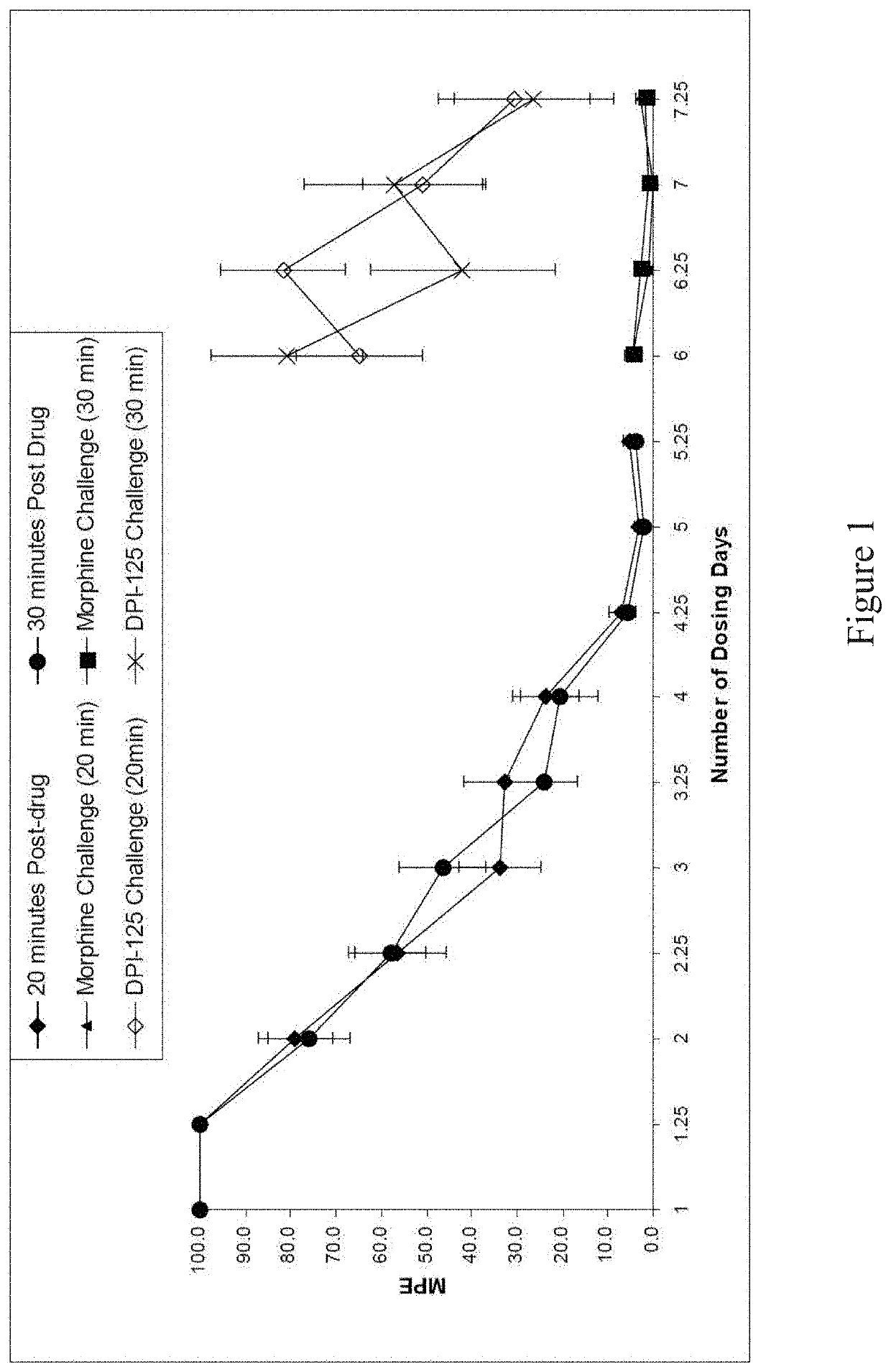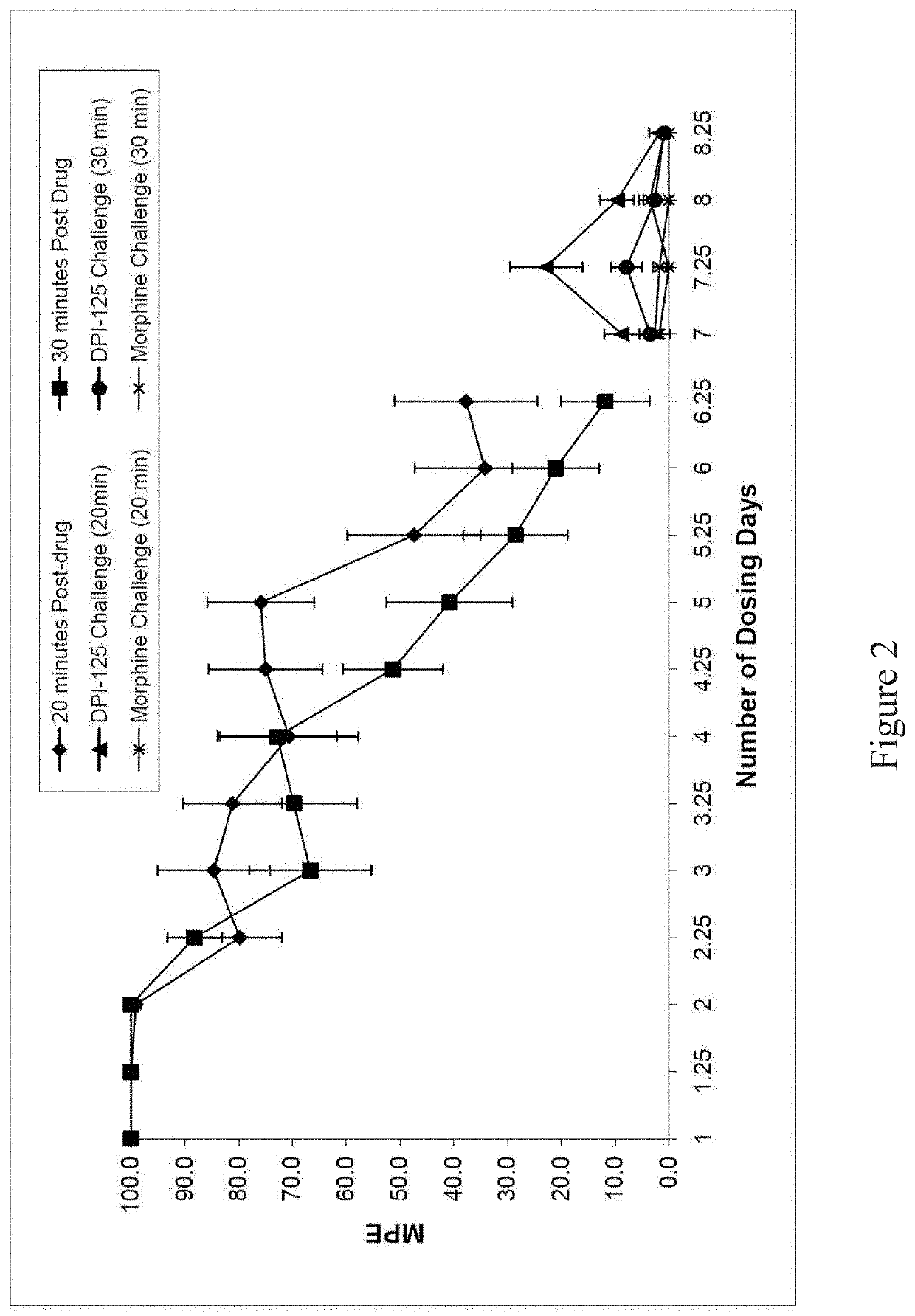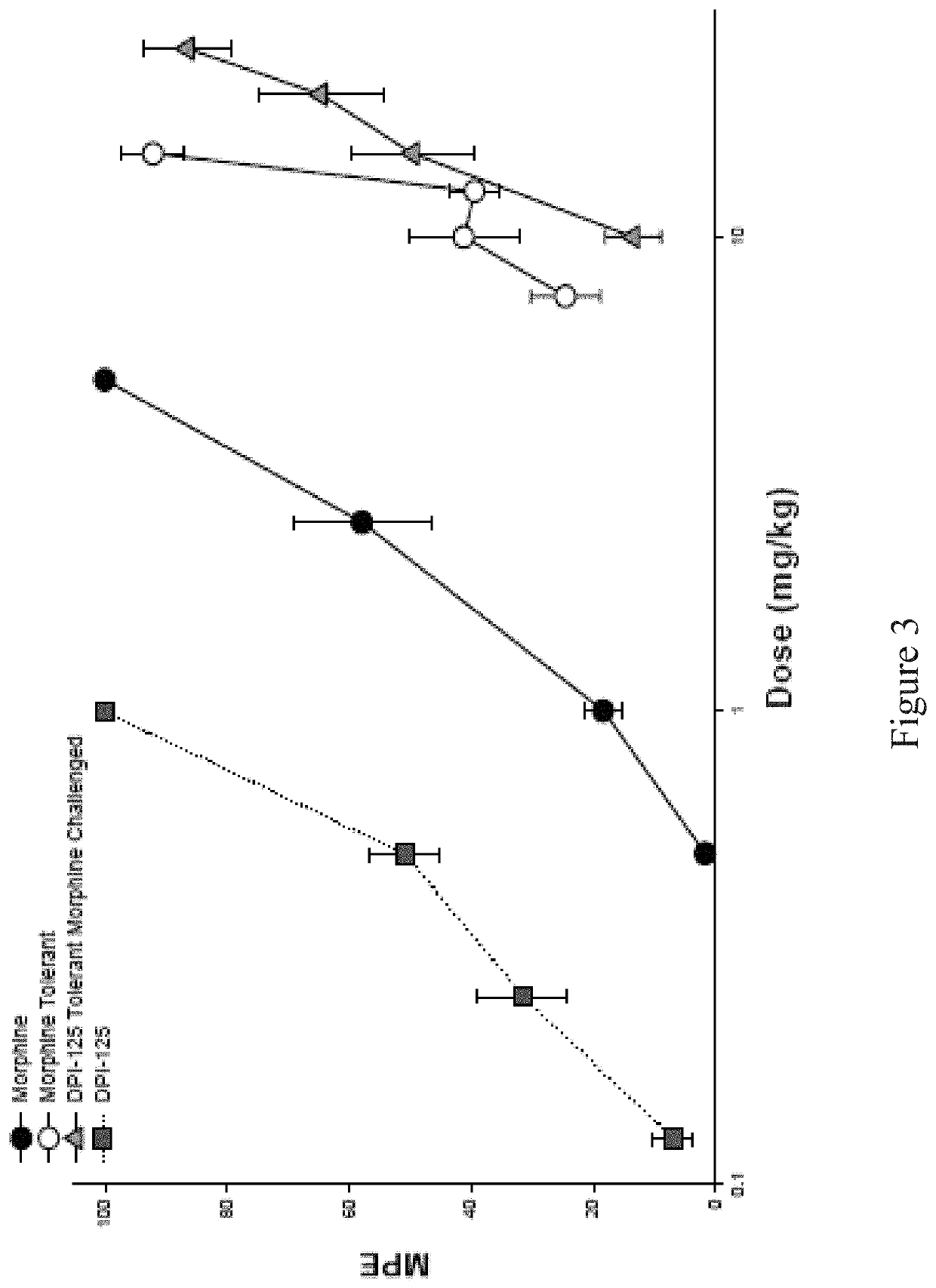Opioid for use to reduce and/or treat drug addiction
a technology for drug addiction and opioids, applied in the field of opioids for use to reduce and/or treat drug addiction, can solve the problems of high dependence risk, serious public health problem, and high risk of death from breathing cessation, and achieve the effect of reducing dependence or tolerance and high efficacy
- Summary
- Abstract
- Description
- Claims
- Application Information
AI Technical Summary
Benefits of technology
Problems solved by technology
Method used
Image
Examples
example 1
[0082]Set out below is the synthesis scheme for production of (−)3-((S)-((2S,5R)-4-allyl-2,5-dimethyl-1-piperazinyl)(3-thienyl)methyl)phenol.
[0083]A solution of 3-bromophenol (400 g, 2.31 mol), tert-butylchlorodimethylsilane (391 g, 2.54 mol), and imidazole (346 g, 5.08 mol) in 5000 mL of dichloromethane was stirred overnight at room temperature. The reaction solution was poured into 2000 mL of water and the layers were separated. The organic layer was washed with 1N aqueous sodium hydroxide solution (3×1500 mL) and water (2×1500 mL) before passing through a pad of silica gel (400 g, silica 60, 230-400 mesh). The silica gel was washed with dichloromethane (2×500 mL), the filtrates were combined and the solvent removed under reduced pressure to give 669 g (98.4%) of 3-(bromophenoxy)-tert-butyldimethylsilane as a clear pale yellow liquid. NMR (300 MHz, CDCl3): δ 0.2 (s, 6H); 1.0 (s, 9H); 6.75 (m, 1H); 7.0 (br s, 1H); 7.1 (m, 2H).
[0084]3-tert-Butyldimethylsilyloxyphenylmagnesium bromid...
example 2
[0090]Binding of Dpi-125 to Three Opioid Receptors
[0091]DPI-125 was evaluated for in vitro opioid receptor affinity in rat brain membranes (and 6 opioid) and guinea pig cerebellum (κ opioid receptor). Membranes for radioligand binding were prepared from either rat whole brain or guinea pig cerebellum, supplied by Pel-Freeze Biological Inc. (Rogers, Ark.). Tissues were homogenized in 50 mM TRIS (Tris[hydrooxymethyl]aminomethane) buffer (pH 7.4) containing 50 μg / ml soybean trypsin inhibitor, 1 mM EDTA (Ethylenediaminetetraacetic acid), and 100 μM PMSF (Phenylmethylsulfonyl fluoride). The homogenized brain tissues were centrifuged at 500×g for 30 minutes (4° C.) to remove large debris. The supernatant was polytronically sonicated for 10 seconds (P.E. setting of 2, 4° C.). Sucrose solution was then added to a final concentration of 0.35 M using a 10 mM TRIS-Sucrose buffer (pH 7.4) and the brain membranes were then centrifuged at 40,000×g for 30 minutes (4° C.). The membrane pellets were...
example 3
[0095]In the rat tail-pinch model, DPI-125 was 47 times more potent than morphine in exhibiting antinociceptive activity. As anticipated, DPI-125 has a much larger therapeutic index (antinociception versus respiratory depression) than morphine. Comparing ED50 values in rats for antinociceptive effects and respiratory depression (increased PaCO2), the therapeutic index for DPI-125 was approximately 7× higher than for morphine (Table 2).
[0096]
AnalgesicRespiratoryED50DepressionTail PinchED50TherapeuticDrug(mg / kg)(mg / kg)RatioMorphine2.014.232.1Alfentanil0.00340.01273.7DPI-32900.0500.9118.2DPI-1250.0500.7214.4
[0097]Table 2: Reduced Potential for Respiratory Depression with Mixed Opioid Agonists. DPI-125 demonstrates comparable analgesic / antinociceptive capacity to morphine and alfentanil with the substantially reduced side effect of respiratory depression, presenting with a much greater therapeutic index
[0098]The preclinical toxicity profile of DPI-125 was as expected for an opioid compo...
PUM
| Property | Measurement | Unit |
|---|---|---|
| weight | aaaaa | aaaaa |
| pH | aaaaa | aaaaa |
| pH | aaaaa | aaaaa |
Abstract
Description
Claims
Application Information
 Login to View More
Login to View More - R&D
- Intellectual Property
- Life Sciences
- Materials
- Tech Scout
- Unparalleled Data Quality
- Higher Quality Content
- 60% Fewer Hallucinations
Browse by: Latest US Patents, China's latest patents, Technical Efficacy Thesaurus, Application Domain, Technology Topic, Popular Technical Reports.
© 2025 PatSnap. All rights reserved.Legal|Privacy policy|Modern Slavery Act Transparency Statement|Sitemap|About US| Contact US: help@patsnap.com



